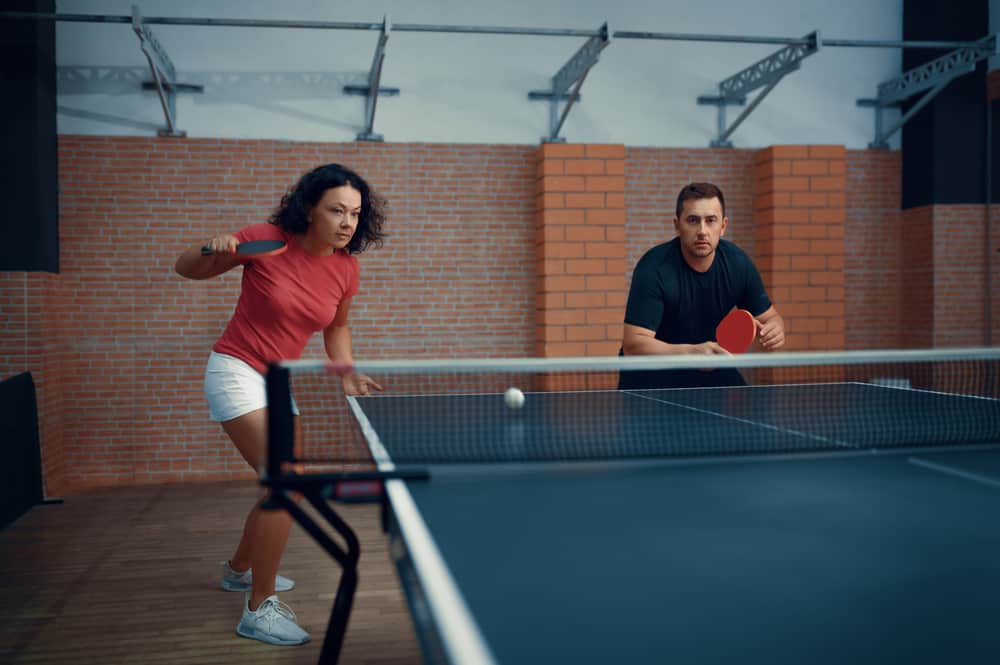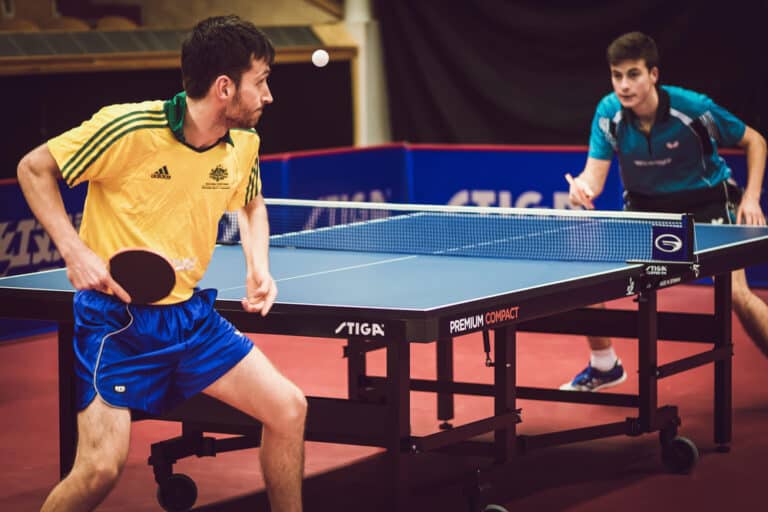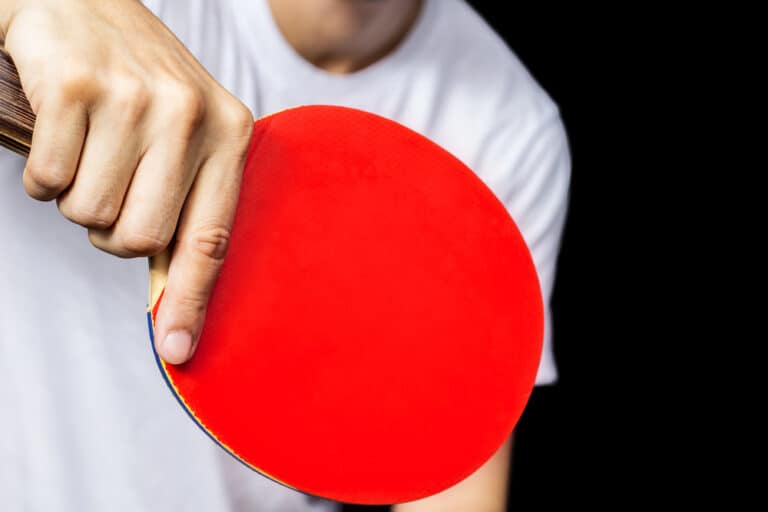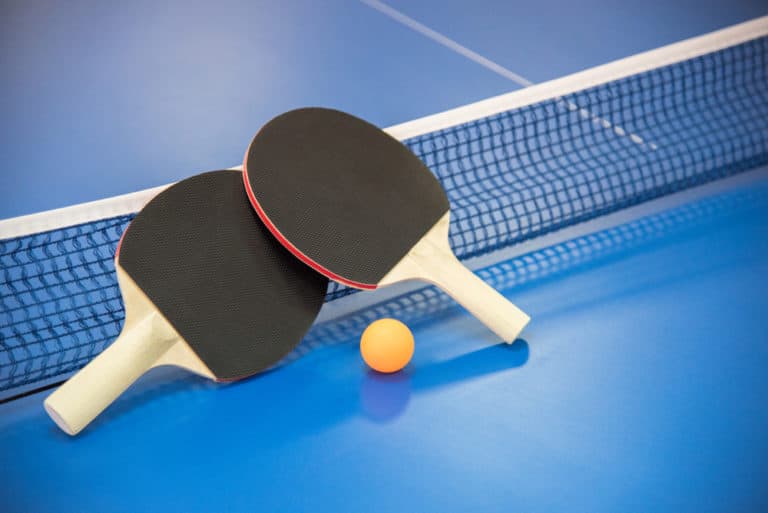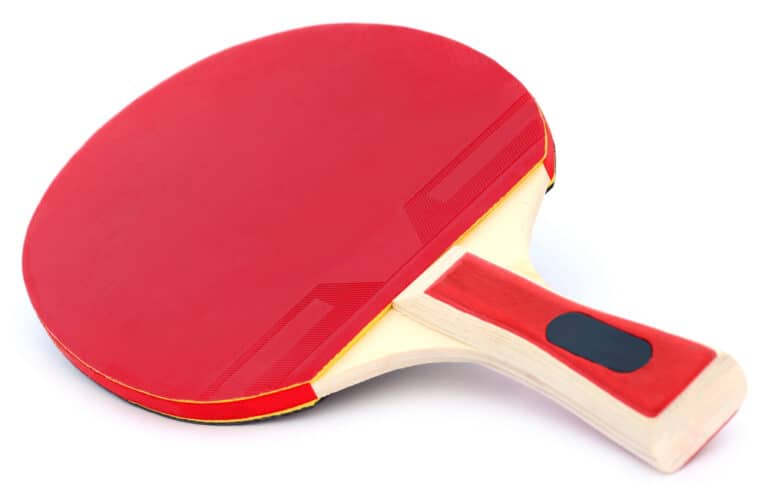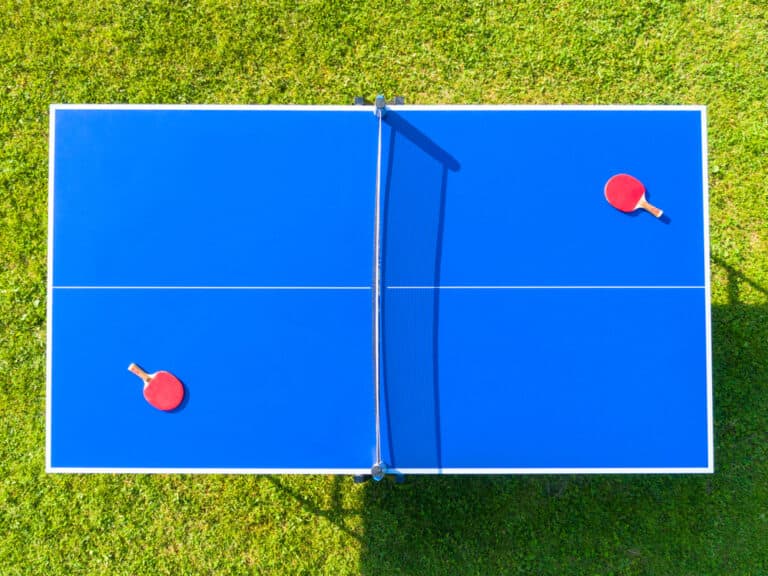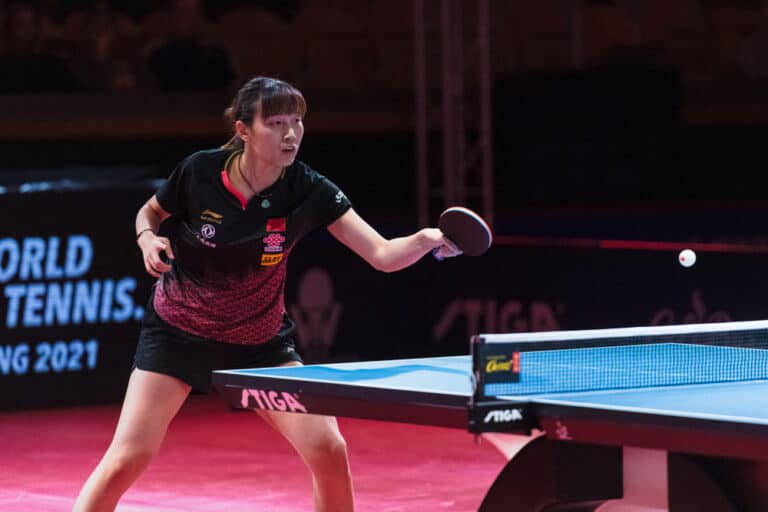How Many Faults Are There In Table Tennis?
We’ve all watched a game of tennis or a table tennis match wherein the umpire would loudly exclaim the word “FAULT!” Although the rules of serving in tennis seem to be better understood worldwide, people often get confused regarding the rules to faults in table tennis.
In table tennis, a single fault is allowed per service turn; however, the rules tolerate an unlimited number of lets. There are many different reasons why a player’s serve may be called a fault, and usually, it is the umpire’s responsibility to judge it.
Whether you are enthusiastic about learning all the ins and outs of table tennis, you want to start playing for a local team, or host a family table tennis tournament; it’s important to start at the basics, such as the rules of the fault. Luckily for you, all the essentials have been compiled below, including some extra tips on how to make the best of every serve.
How Many Faults Are There In Table Tennis?
In table tennis, faults are defined as the failure of a player to produce a correct or legal serve. In the instance of a fault, the server will automatically forfeit the point to their opponent, and the next point will come to play.
A common misconception is that faults are the same as mistakes in tennis and its tabletop counterpart. While a mistake would cost you a point (just like any other unforced error), a fault relates exclusively to mistakes made during the service, and can only the server can make this mistake.
Now, in tennis, you are allowed one fault per service turn before you will lose the point for making another. In table tennis, however, a single fault will already lose you the point. Therefore, getting your first serve right in table tennis is extremely important, but don’t worry! Luckily serving in table tennis is much more doable for beginners and intermediates than regular tennis.
In table tennis, when your serve hits the net but bounces on your opponent’s side of the table, the service will be considered a “let,” and a re-serve will be called for. This phenomenon does not count as a fault. You can serve an unlimited number of lets, as they do not count as a mistake and therefore award no player a point. You may, however, only serve one let as the point is awarded immediately.
What Will Cause My Serve To Be A Fault In Table Tennis?
Since we have established that table tennis has only one fault (per serve), it is important to understand which mistakes will cause your serve to be a fault. The rules regarding serves are much simpler in table tennis than in tennis, but you should understand each one thoroughly to ensure that you don’t make silly mistakes or, even worse, dare to play the sport wrong.
Serving Rules In Singles Table Tennis
First, we will discuss the common rules regarding faults in singles table tennis, as they differ from those practiced in doubles. Most of the rules from singles are used in doubles, except for a couple of specifics. You can refer to the International Table Tennis Federation’s (ITTF) handbook for more information. Let’s take it from the top then, shall we?
1. Rest The Ball Freely On Your Open Palm Before Serving
Every serve of yours will start with the ball resting freely on your hand’s open and flat palm. The ball must be able to roll off your palm if you tilt it towards any angle, meaning your hand should be as flat as possible. You are therefore also not allowed to grip the ball in any way.
2. Your Free Hand Must Be Still At The Start Of The Serve
The free hand on which the ball rests at the start of the serve (i.e., the hand not holding your paddle) should be stationary at the start. The ball must also be resting in your hand behindthe white line at the end of the table. Your thumb, however, is allowed to hover over the table.
3. You Must Throw The Ball At Least 16cm Vertically Upwards
Before hitting the ball for the first time, you must project it into the air as vertically as possible. That is to say, you mustn’t throw it forward or backward, but you should lift it straight into the air. After that, ensure that the ball travels at least 16cm (or around 6.3 inches) higher than the height it left your hand.
The ball is then allowed to drop any distance (above the table) so long as the player can play the rest of the serve correctly. Players must hit the ball on its downturn. The three rules mentioned above are mainly set to prevent players from adding any form of external spin to the ball, which may make their opponent’s return shot harder than it is supposed to be.
4. During The Serve, The Ball Must Be Visible
The receiver must be able to see the ball for the whole duration of the serve, and it may not be obstructed by anything the server is wearing or any part of their body. This rule is also partly why the hand holding the ball must be spread flat open – to provide maximum visibility of the playing object.
While and after tossing the ball, you must be extra careful not to let a limb or torso get in the way of the receiver’s line of sight of the ball. If an umpire notices something like that, he may award the point to the receiver.
5. The Ball Must Touch The Server’s Side Of The Table First
After being hit by the server, the ball must first bounce on the server’s side of the table. After that, it must get over (or around) the net and bounce on the opponent’s side of the table. This time if it touches the net and still reaches the other side of the court, it is not considered a mistake.
There is a false belief found among table tennis amateurs, which is that the ball may not bounce twice on the receiving end of the table after a serve. In the event of a double-bounce on the receiving end, it will be the receiver that is in the wrong. If a server manages to let the ball bounce twice on the receiver’s end, they made the shot harder at returning, and it is a legal serve.
Another mistake many people make is regarding the ball’s position on the receiving end of the court. When the ball has moved over or around the net, it is allowed to be on either side (left or right) of the vertical line on that side of the court. It is, therefore, not like regular tennis with specific rules regarding the side of the serve.
How Do The Rules Of Serving In Doubles Differ?
Primarily, doubles table tennis takes all the rules of regular singles and then adds one more on top of the Essentially, the rules of doubles were brought into play to assist in the flow of the game and avoid players getting in one another player’s way. The same goes for serving rules in doubles.
Serves Must Be Hit Diagonally Across The Table
As mentioned earlier, this rule is often wrongly used in singles table tennis. However, it is put into place as a strict rule, and if the server fails to comply, their team shall lose a point to the opponents. Furthermore, the box from which the serve takes place in doubles will always be on the server’s right-side box to the opponents’ right-side box and never from the left to the opposite left.
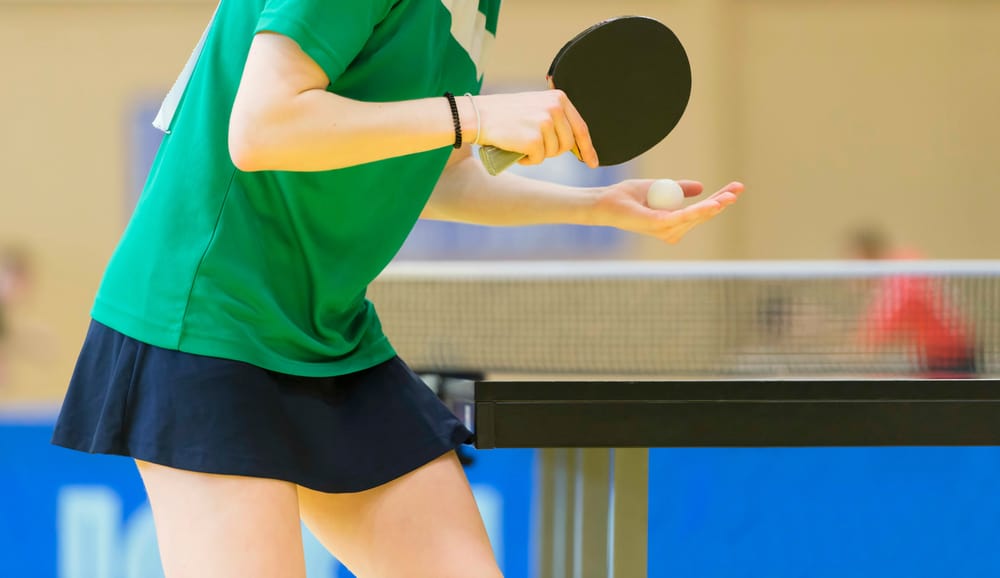
The Umpire’s Role In Table Tennis Serving
The rules set out by the ITTF state that players are responsible for ensuring that their serves comply with the standard rules in the ITTF handbook. It is also their responsibility to ensure that both the umpire and assistant umpire can see how the rules are complied with during the service turn.
When any doubt comes into play during a player’s serve, either the umpire or assistant umpire may call the point a let and declare that it be replayed – just as the serve would’ve had to be redone if it had touched the net and went over to the other side of the court. This kind of let may only be awarded on the first occasion as it will serve as a warning.
Any subsequent instances of doubt caused by a player’s serve must then be penalized by the umpires, in which case it will be declared a fault, and the server will forfeit the point. In any instance where there is no doubt, and the umpire hadn’t previously called a let, they are still allowed to declare the point a fault.
How Does Serving Alternate In Table Tennis?
Many confuse who serves when and how the services rotate in table tennis. Luckily, it is much simpler than you may think, and once you learn the basics, it is easy to apply it in singles and doubles table tennis.
According to the ITTF standards, the first player to serve is decided upon by a coinflip or a similar random draw. The lottery winner can then decide whether they or their opponent will be the first to serve.
In the past, games consisted of 21 points, and each player would serve for 5 consecutive points, upon which point the responsibility of serving would shift. Under new ITTF regulations, games are only played up to 11 points, and the server changes after every two points.
In 11-point games, players must lead with two points upon reaching the target of 11 points. If both players have scored at least 10 points, the serving rule changes so that players swap turns to serve after every point until someone leads by two. Upon this point, they will be declared the victor.
Similar to the singles version of the game, the service turn rotates every two points in doubles. The difference here is that the serves also rotate between the different teammates. So, each player essentially serves two out of every eight points.
Some Of The Best Table Tennis Serves
In table tennis, serving is arguably the most important part of the game. Giving a great service that is difficult for your opponent to return can put them under pressure and set you up to win as many points as possible. Furthermore, it is the only part of the game where you can hold the ball and hit it exactly where you want it to go.
Therefore, it is necessary to understand all the rules mentioned above while sharpening your skills, getting to know the different strokes, and learning different serving techniques. The pros and other enthusiasts have perfected these techniques over the years, and below you will find a list of the top-rated serves to help you win the most games you can.
In standard table tennis, you would opt for three types of serves, and any of the below can be used as any type. They are your safe serves (usually for beginners, used to get the ball on the other side), the set-up serves (which are used to put your opponent under just enough pressure to make them hit you and easy “set-up” shot back), and finally, the ace serves (meant to win the point immediately).
1. The Standard Forehand Serve
The serve that most people will instinctively hit will be on their forehand. It is a type that beginners use to serve legally and get the ball onto the other side of the net. No spinning or real technique is required, but this service can be dangerous when executed with precision. Some opponents may be caught off guard if you fake a standard forehand serve and unexpectedly put some spin on it.
2. The Standard Backhand Serve
Your standard backhand serves no different technique from the forearm other than hitting the ball with the opposite side of the paddle. As a result, you will need to twist your body around 180 degrees – just enough to be able to hit the ball with the backside of the paddle. Here you can also add some spin or use it as a way to confuse your opponent as to what your strong side is.
3. The Pendulum Serve
There are many pendulum variations, but you would most often hear the short sidespin pendulum serve and the short sidespin reverse pendulum serve. The idea behind both of these is for your opponent to have difficulty returning it, allowing you to attack the next ball and score a point.
You want to hold the paddle with four fingers on the backside face and your thumb on the front/top. This grip will give your wrist a lot of flexibility. You want to stand sideways with your hips in line with the vertical length of the table. When you’re about to hit the ball, you want your bat tilted near upward and try to “cut” through the bottom of the ball while turning your body.
If you are backhand dominant, you can use the reverse iteration of the pendulum serve. This service will require the same technique, but with your hands and body reversed to the other side. Both these serves provide a lot of spins and will certainly put your opponent under pressure. Remember that the goal is to get sidespin on the ball, so cut through it so that the furthest point of the paddle is facing down.
4. The Chop Serve
The chop serve is similar to the pendulum, but the goal is to get backspin on the ball. Therefore, hold your paddle and your body in the same position, but this time keep your paddle tilting slightly downward toward the table’s side. Then “chop” through the bottom of the ball as it falls. The lower the ball falls before you hit it, the more effective this service will be.
Conclusion
Since only one fault per serve is allowed in table tennis, you must understand how to avoid it. Faults can cost players the game, but knowing how to serve properly can put your opponent under pressure and secure a victory. Try your best, and good luck!

